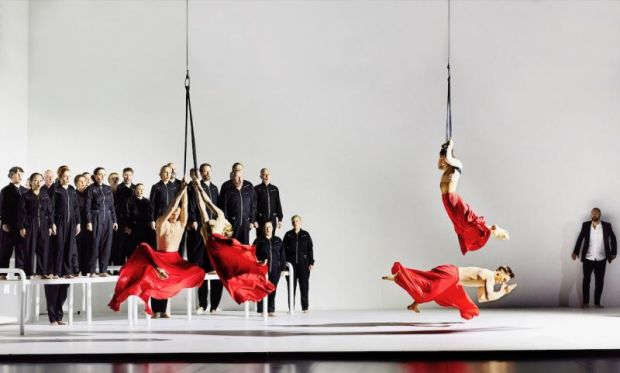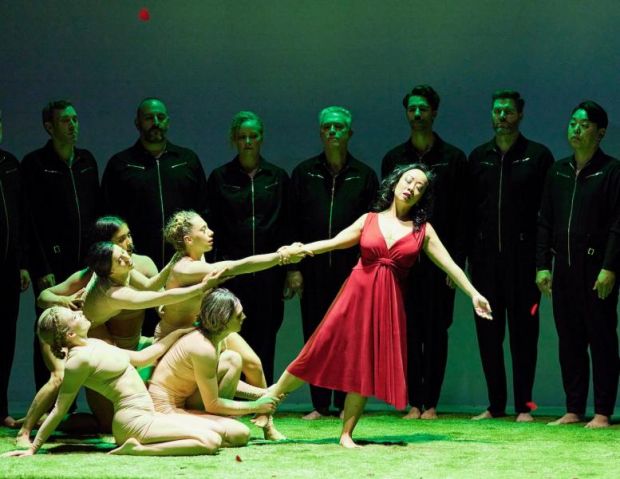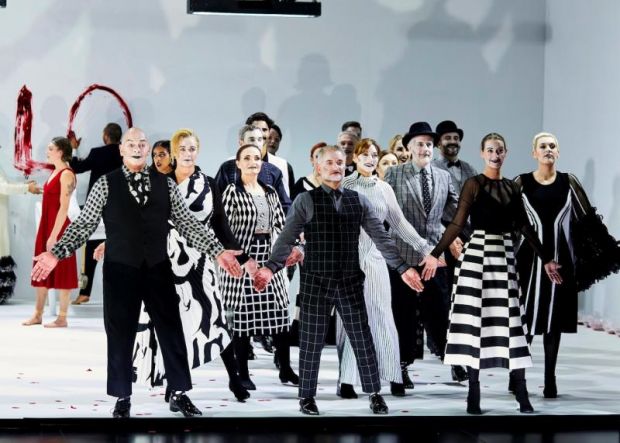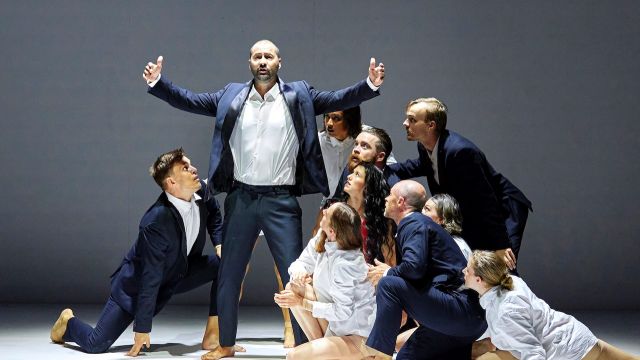Orpheus and Eurydice
A tradition of grand opera over the centuries has been the inclusion of a ballet – inserted into the production with some link to the narrative - as an opportunity for spectacle and reflection. These are often cut or downsized from contemporary performances for economic reasons.
This production - a joint project of Opera Australia, Opera Queensland and Circa - flips this tradition on its head. Such was the quality of the choreography and acrobatics, that it felt like an opera had been inserted into a ballet.

Whilst a few purists might be disappointed at the editing of the music and lyrics, such was the quality of the performance by the ensemble from Circa, that the audience was thrilled by the spectacle.
The opening scene has a performer descending from near the top of the proscenium in a blissful contortion wrapped in drapes. During the opera there were audible gasps of appreciation as members of the ensemble were tossed, twisted and somersaulted around the stage.
The set, designed by the Director Yaron Lifschitz, was artfully blank as it was set in an asylum. Against a wall, the condensed translated captions appeared elegantly on the physical set in a font that appeared to be smoking. This gorgeous innovation from Boris Bagattini made the opera so much more accessible than the regular strain of reading a sub-title on a different screen.

Written in 1762, the opera is based on the Greek legend. Orpheus wakes after his wedding night, mourning the death of his wife Eurydice. An image of his wife appears, and she offers him the chance to descend into the underworld to be reunited with Eurydice. But he must obey a strict rule not to look directly at her.
In this production Orpheus is mad and every woman resembles his wife. In the counter tenor lead role Christophe Dumaux shone, thrilling the audience with his rendition of the most famous aria “Che farò senza Euridice?”
On opening night, chorus member Sandy Leung made her principal debut as Eurydice, when the regular lead became ill. With just one production rehearsal under her belt, she fitted neatly into the opera – no mean feat considering she had to choreograph around a troupe of acrobats.

All up, the opera was crisply edited down to eighty minutes in a sublime production that sounded and looked beautiful.
Lifschitz aimed for and achieved what he described as “a world full of the steaming entails of desire”.
David Spicer
Photographer: Keith Saunders
Subscribe to our E-Newsletter, buy our latest print edition or find a Performing Arts book at Book Nook.

